Rhetorical Devices Teaching Resources
Explore rhetorical devices in persuasive writing with your students with printable and digital activities created by teachers for your elementary or middle school classroom!
This collection of teaching resources is packed with Common Core-aligned printables and activities for teaching the different types of rhetorical devices and how to employ them in your writing. Each resource has undergone a careful review by an ELA teacher on our teaching team to ensure it's ready for your lesson plans and your students!
New to teaching this section of the curriculum, or just looking for some fresh ideas? Read on for a primer from our teacher team, including a definition of rhetorical devices and list of devices to teach your students, plus examples that can help you teach this topic!
What Are Rhetorical Devices? A Kid-Friendly Definition
We like to start with a rhetorical device definition that you can use when introducing these techniques to your young writers. Try this one from our teacher team!
Rhetorical devices are special tricks writers and speakers use to make their words more powerful and persuasive. These language techniques help grab the reader's or listener's attention and make them think or feel a certain way.
Using them strategically and appropriately throughout your writing is a powerful skill. Think of it as using special tools to make your words sparkle!
Rhetorical devices are also sometimes called "persuasive devices," and they can be used by a writer to:
- Create a bond between the author and the reader or listener
- Reinforce and emphasize the author’s viewpoint
- Appeal to the emotions of the reader or listener
- Make the author seem knowledgeable, reliable and correct
- Make other views seem foolish, dangerous and wrong
Rhetorical Device Examples to Share With Your Students
Now that we've covered the meaning, let's talk about the different types of these devices and look at some examples that can be helpful to share with students.
What follows is rhetorical device list we suggest using as a guide to ensure you're covering the most important techniques with your students. We've also included kid-friendly definitions of each that will hopefully make it easier to present them to your students, as well as specific examples.
Simile
Let's kick things off with one of the most common rhetorical devices used in persuasive writing — similes. When you compare two things using the words "like" or "as," you help the reader to better visualize and understand what we're talking about. It makes our message more relatable — which also tends to make it more convincing — because it creates a vivid image in their minds.
Example of This Rhetorical Device: If the writer says "Her smile is as bright as the sun," they are comparing the brightness of her smile to the sun.
Metaphor
Using a metaphor in your writing is similar to a simile, but instead of using "like" or "as," this rhetorical device makes a more direct comparison. The writer or speaker will say that something is another thing.
Example of This Rhetorical Device: For example, the writer might say, "Her smile is a ray of sunshine." This is a metaphor that compares the smile to sunshine. It's similar to the statement above, but it's done without using "like" or "as."
Alliteration
Another popular type of rhetorical device is alliteration, which involves using the same beginning sound in several words that appear close together. This can help make the piece of writing more memorable for a reader as well as more fun to read.
Example of This Rhetorical Device: The tongue twister "Sally sells seashells by the seashore" is a well-known example of alliteration. The words "Sally," "sells," "seashells," and "seashore" all start with the "s" sound.
Hyperbole
When we use this device, we exaggerate to make a point or create a vivid image. This is another way to make a piece of writing more memorable, and it also helps the writer to emphasize the importance or intensity of a particular point.
Example of This Rhetorical Device: When you use this type of device in writing, you might say "I'm so hungry I could eat a horse." Of course, you don't really mean you would eat a horse, but the exaggeration is a way of showing just how hungry you are, persuading the reader to believe you.
Onomatopoeia
This fun technique that can be used in persuasive writing involves using words that sound like the sound they are describing. This helps the reader or listener imagine the scene more vividly, and it also makes our reading more engaging and exciting.
Example of This Rhetorical Device: For example, the word "buzz" sounds like a bee flying.
Repetition
When we repeat words or phrases to make them stick in the reader's or listener's mind, we call it repetition. When we repeat words or phrases, it shows that our point is important and worth remembering.
Example of This Rhetorical Device: For example, you might write, "Never give up, never give in, never lose hope." By repeating the word "never," you emphasize that we should never stop trying.
Personification
This device involves giving human qualities to something that is not human, and it can make the thing more relatable for a reader.
Example of This Rhetorical Device: For example, you might say, "The lightning danced across the sky." Lightning can't really dance in the way that a human can, but by personifying the light, it makes the storm more interesting and relatable for a reader.
- Free Plan

Emotive Language Cloze Passage Worksheet
Get students using emotive language examples in their persuasive essays with this differentiated cloze passage worksheet.
- Free Plan
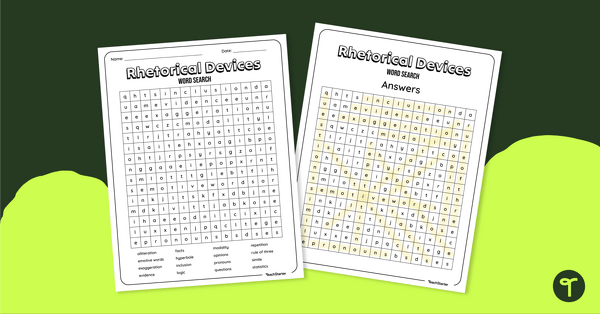
Rhetorical Devices Word Search
Familiarize your students with the most common rhetorical devices with a fun word search.
- Plus Plan
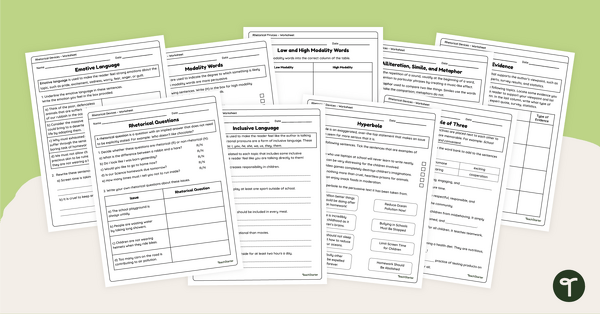
Persuasive Techniques Worksheet Pack
Explore persuasive techniques with your students using this nine-page worksheet pack perfect for your persuasive writing unit.
- Plus Plan
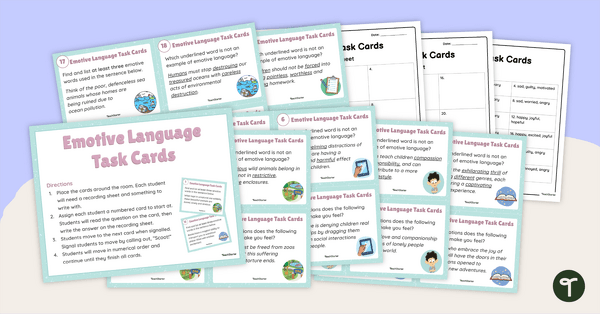
Emotive Language Task Cards
Get students exploring emotive language examples with this set of task cards perfect for your persuasive writing unit.
- Plus Plan
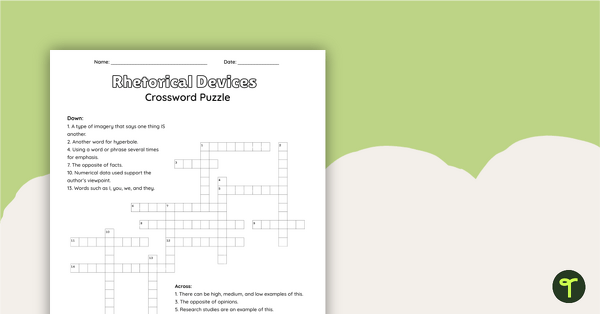
Rhetorical Devices Crossword
Familiarize your students with the most common rhetorical devices with an engaging crossword puzzle.
- Plus Plan
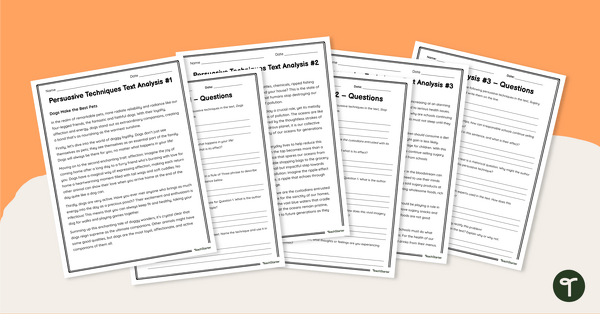
Analyzing Persuasive Techniques Worksheets
Get students analyzing persuasive techniques and their effects on audiences with this set of three texts with accompanying questions.
- Plus Plan
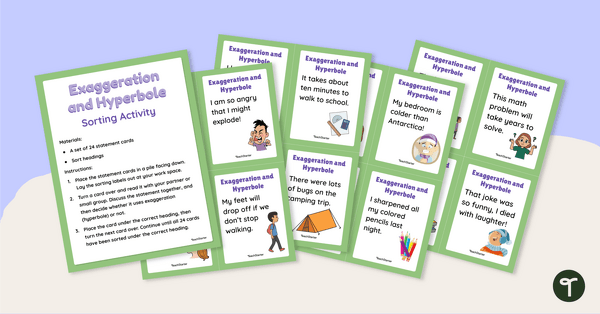
Exaggeration and Hyperbole Sorting Activity
Explore examples of hyperbole with your students using this set of 24 sorting cards perfect for your reading centers.
- Plus Plan

Exaggeration and Hyperbole Interactive Activity
Explore hyperbole examples with your students using this digital game perfect for lesson warm-ups or lesson wrap-ups.
- Plus Plan
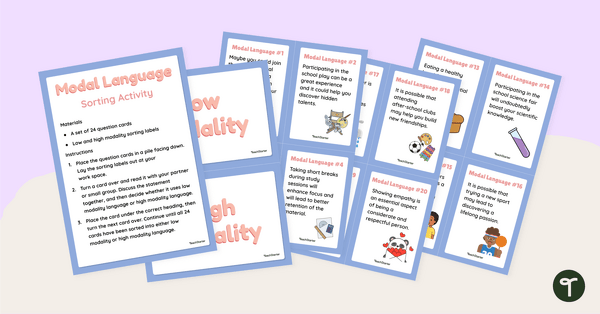
Modal Language Sorting Activity
Explore examples of modal language with your students using this set of 24 sorting cards perfect for your persuasive writing unit.
- Plus Plan
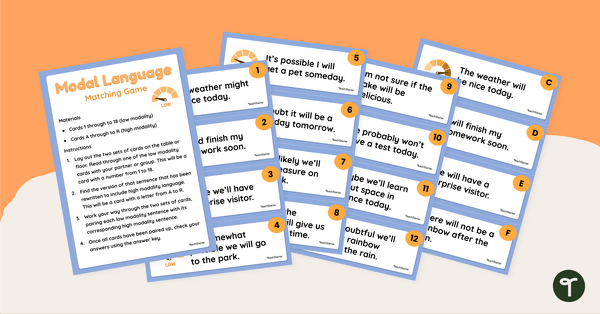
Modal Language Matching Activity
Have students explore high modality and low modality language with this matching game to use during your persuasive writing unit.
- Plus Plan
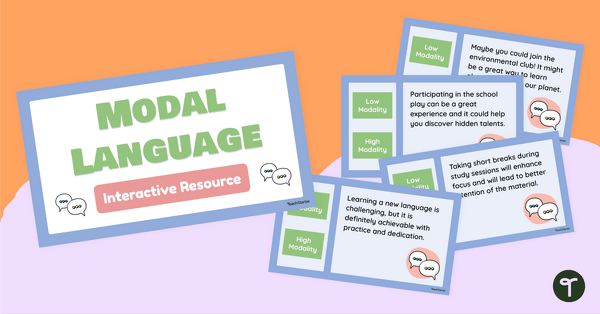
Modal Language Interactive Activity
Explore the language of modality with your students using this digital game perfect for your persuasive writing lessons.
- Plus Plan
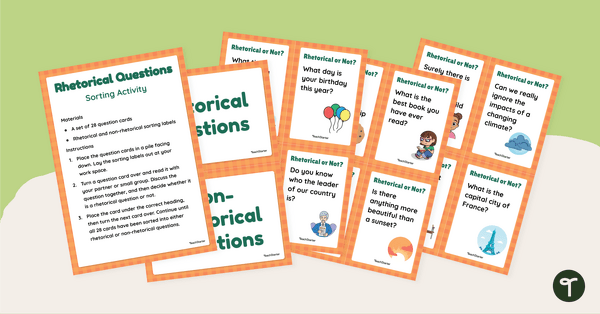
Rhetorical Questions Sorting Activity
Explore examples of rhetorical questions with your students using this set of 28 sorting cards perfect for reading centers.
- Plus Plan
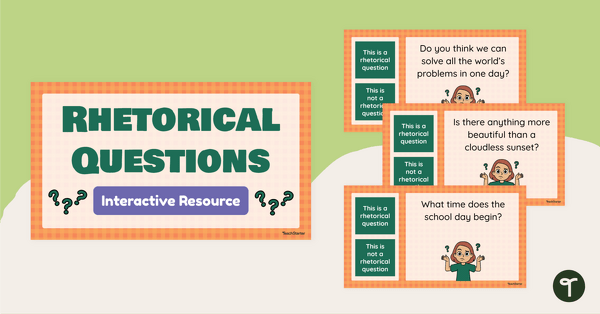
Rhetorical Questions Interactive Activity
Explore rhetorical questions with your students using this digital game perfect for your persuasive writing lessons.
- Plus Plan
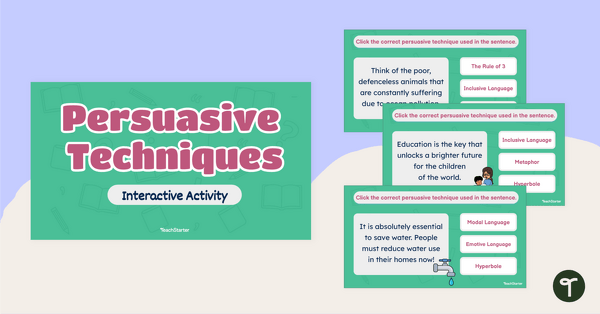
Persuasive Techniques Interactive Activity
Explore persuasive technique examples with your students using this digital game perfect for your persuasive writing lessons.
- Plus Plan

List of Rhetorical Devices
Download this list of rhetorical devices for your students to refer to when writing a persuasive essay.
- Plus Plan
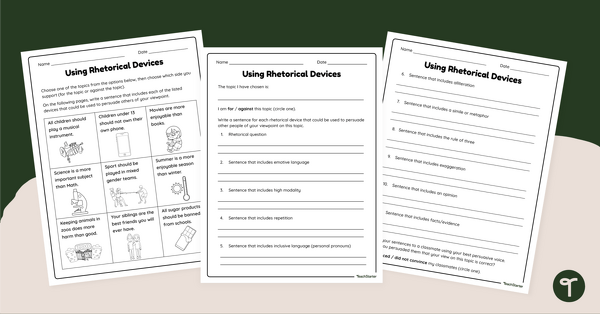
Using Rhetorical Devices Worksheet
Use this rhetorical devices worksheet to help your students create rhetorical device examples based on a specific topic.
- Plus Plan
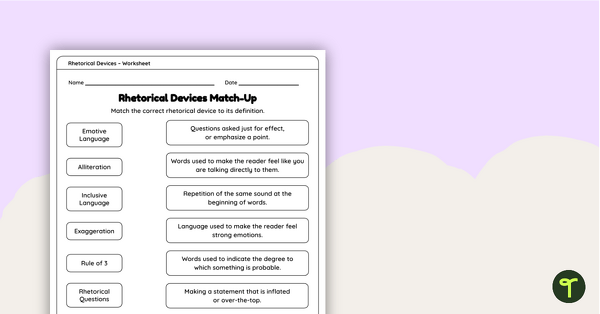
Rhetorical Device Definitions – Match-Up Worksheet
Have students match the rhetorical devices with their definitions using this simple one-page worksheet.
- Plus Plan
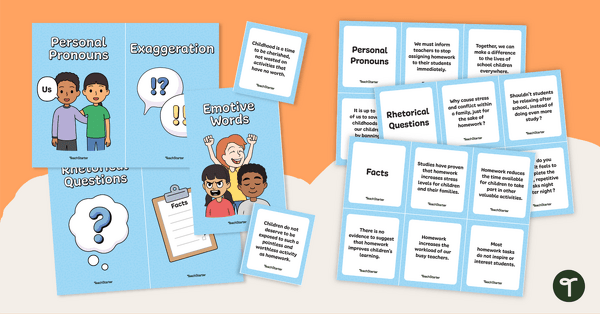
Rhetorical Devices Sorting Activity
Explore rhetorical devices with your students using this set of sorting cards.
- Plus Plan
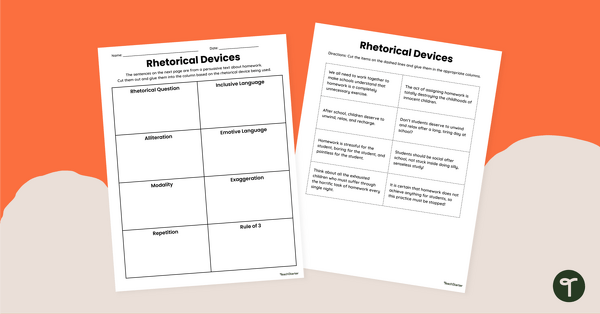
Rhetorical Device Examples – Cut and Paste Worksheet
Match the persuasive writing techniques with the correct examples using this simple cut-and-paste worksheet perfect for your persuasive writing unit.
- Plus Plan
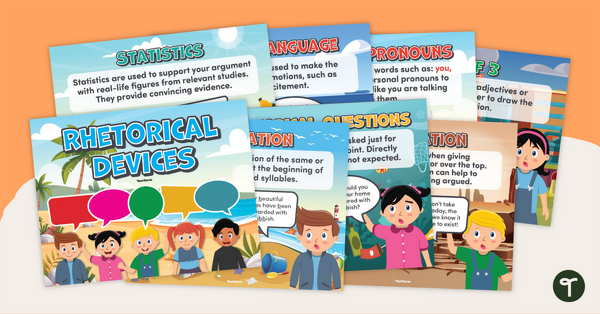
Rhetorical Devices Anchor Charts
Support students to improve their persuasive writing with these rhetorical devices anchor charts.
- Plus Plan
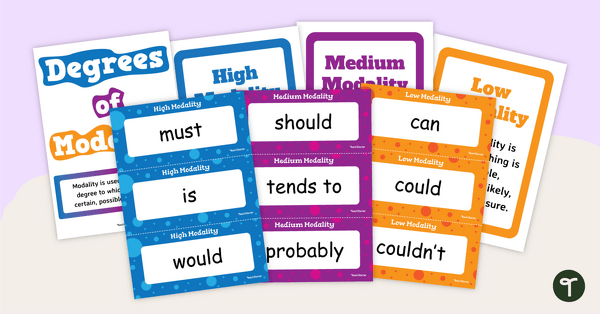
Persuasive Words – Modality Word Wall with Information
Immerse your students in high, medium and low modality words with this set of 56 word wall cards.
- Plus Plan
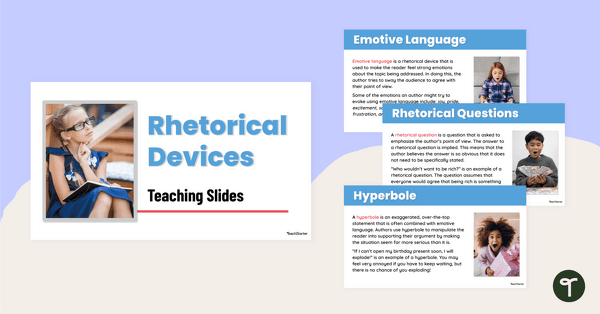
Rhetorical Devices Teaching Slides
Explore types of rhetorical devices with your students using this detailed and age-appropriate slideshow perfect for your persuasive writing unit.
- Plus Plan
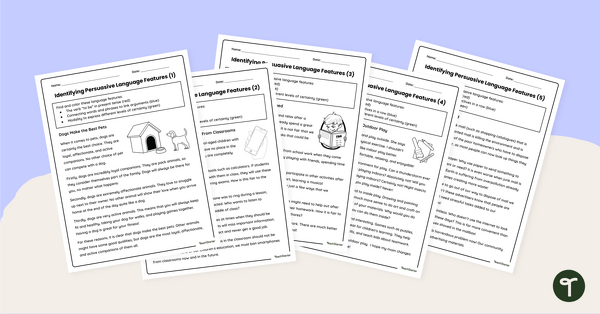
Identifying Persuasive Language Worksheets
Explore persuasive language with your students using this set of five persuasive texts on a variety of age-appropriate topics.